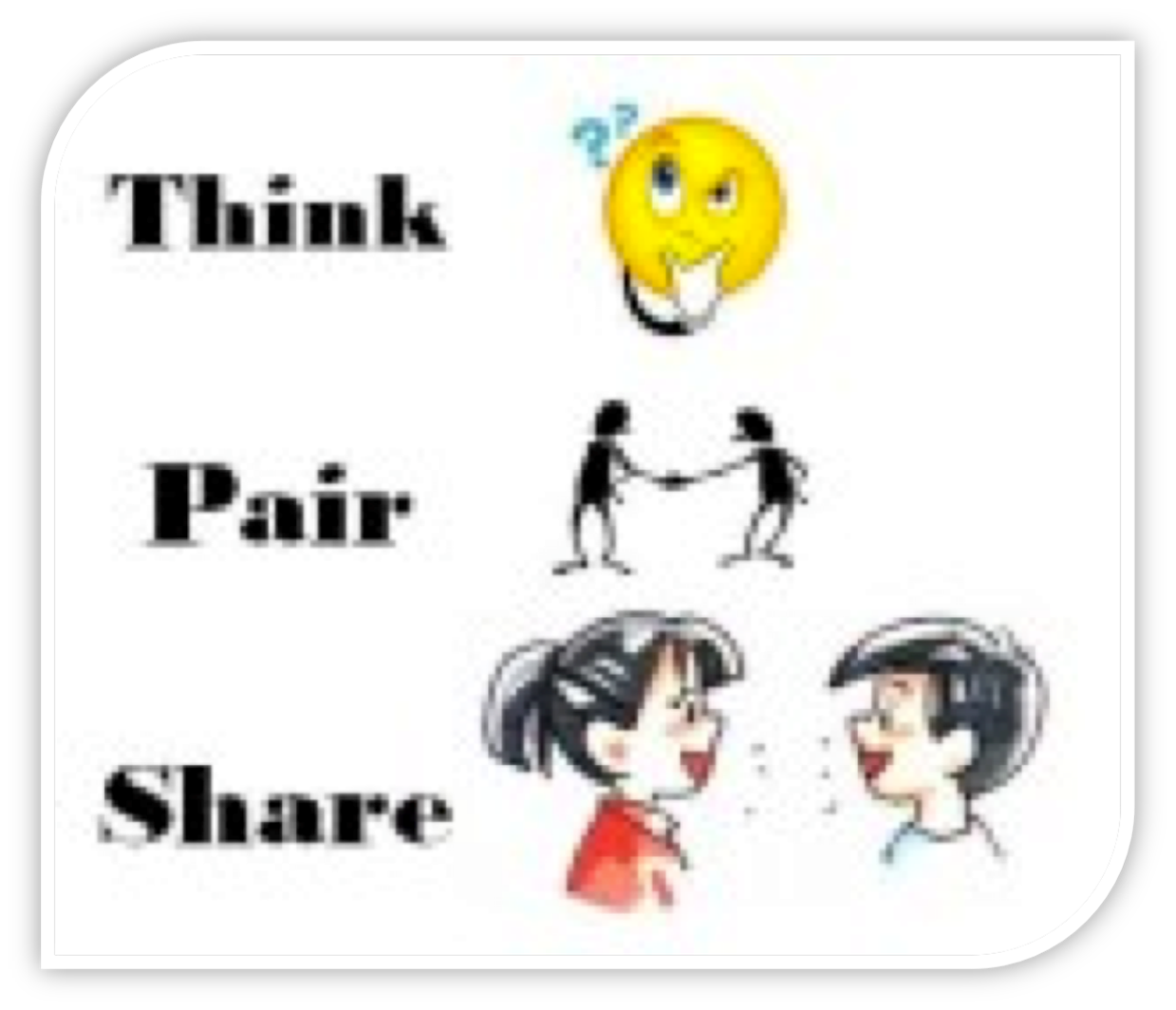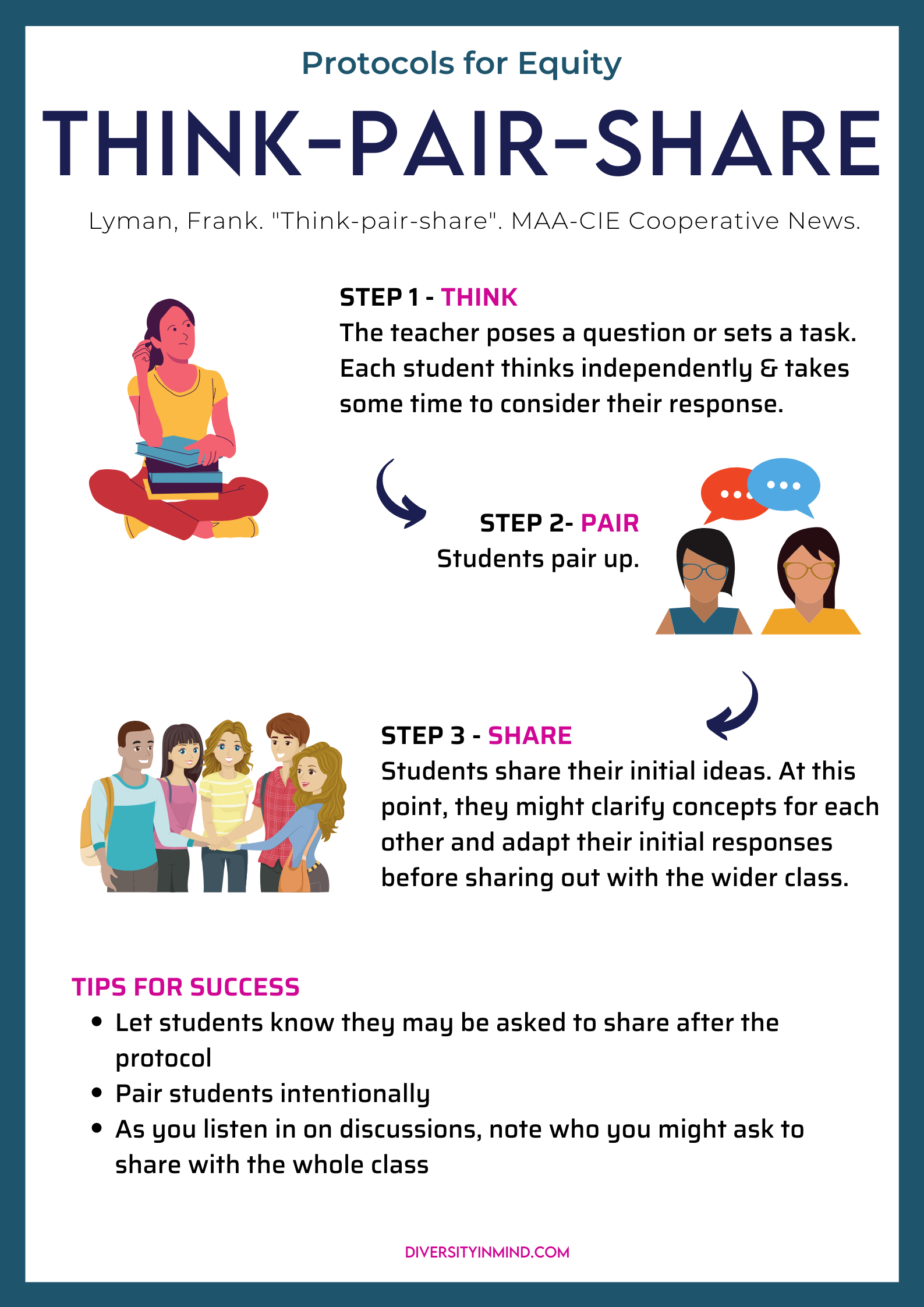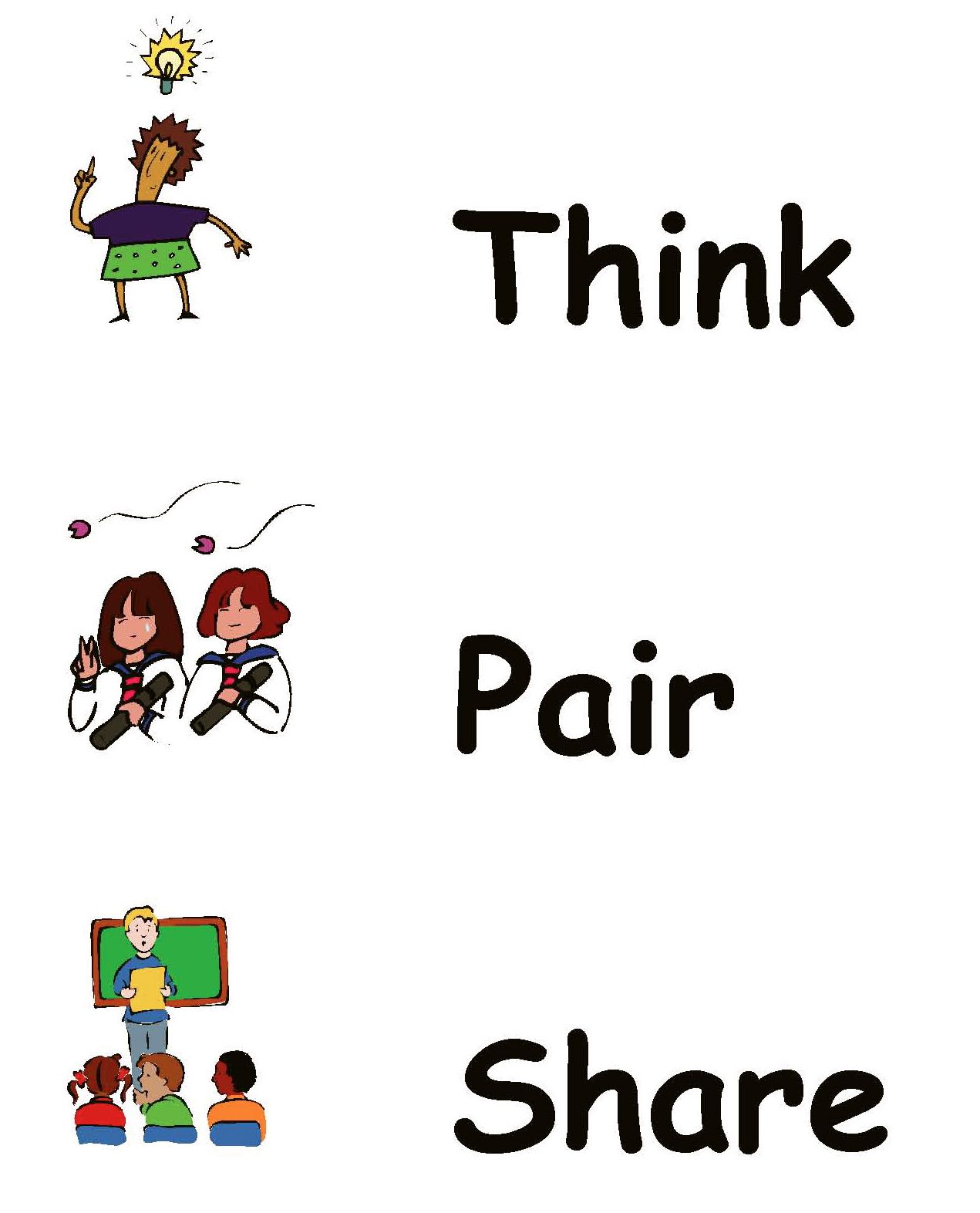
Think, Pair, Share Kelsey Anderson
The Think-Pair-Share strategy is designed to differentiate instruction by providing students time and structure for thinking on a given topic, enabling them to formulate individual ideas and share these ideas with a peer. This learning strategy promotes classroom participation by encouraging a high degree of pupil response, rather than using a.

Think Pair Share Poster
Think-pair-share is a technique that encourages and allows for individual thinking, collaboration, and presentation in the same activity. Students must first answer a prompt on their own, then come together in pairs or small groups, then share their discussion and decision with the class. Discussing an answer first with a partner before sharing.

Think Pair Share YouTube
In general, I, my colleagues, and the research say, "Yeah.". The think-pair-share is a basic building block of active learning, which is clearly an effective way to facilitate learning. But is.

Think Pair Share Bilder A New Twist On Think Pair Share Think Pair Share Twist Classroom
The 'think, pair, share' teaching strategy is a strategy used in schools to help children work in pairs and learn from their peers. When you have an idea for a discussion, or you want to ask the class some questions, you could use the think, pair, share teaching strategy. Put a few questions on the board about the topic you are teaching. Give.

Magic Education One for All, All for One (Cooperative Learning)
Think-Pair-Share is an instructional strategy for summarizing. But what exactly makes it so effective, and what do teachers need to know? In our video, we sh.

ThinkPairShare (TPS) Tafelkarten & Methodenkartei Unterrichtsmaterial in den Fächern
The purpose of this document is to familiarize you with the Think-Pair-Share learning strategy. Specifically, you should: Be able to describe the components of the think-pair-shared activity. Identify the potential benefits of think-pair-share for the learner and the instructor. Apply the think-pair-share activity in a teaching encounter.

ThinkWritePairShare Math Coach's Corner
A particularly powerful way to do Think-Pair-Share is to use mini dry-erase boards. During the think stage, students write down what they can recall or jot down some initial thoughts. During the pair stage, students can add or remove thoughts from their board. Then, in the share stage, students hold up their boards to share what they wrote with.

Think Pair Share. Give students a prompted question and allow them to think about their answer
Think-pair-share is a collaborative learning strategy where students work together to solve a problem or answer a question about an assigned reading. This strategy requires students to (1) think individually about a topic or answer to a question; and (2) share ideas with classmates. Discussing with a partner maximizes participation, focuses.

Pin on Reading
T (Think): Teachers start by precisely asking using open-ended questions about the text .Students pause to reflect and recall what they know about a specific topic or. P (Pair): Students are combined into pairs or a small group. S (Share): Share a good opportunity for students to speak their thoughts to their partners.

Protocols for Equity in the Classroom Diversity in Mind
How It Works. The teacher asks an open-ended question and students think quietly about it for a minute or two. Then every student pairs up with a partner and they discuss the question for two to five minutes. Finally, the whole class engages in a discussion where students raise their hands and share all the thoughts and ideas they've gathered.

DABMethode Merkposter und Tafelkarten / thinkpairshare Unterrichtsmaterial im Fach
Think Pair Share doubles as a handy formative assessment tool. As students engage in their pair share activity, you can navigate the classroom, listening in on discussions, identifying misconceptions and assessing comprehension. All the while you're also looking for those giving the correct answer.

THINK! PAIR! SHARE! rickrick active participative modelstudent rickybernardii Think pair
Think-Pair-Share (TPS) is a cooperative learning activity that can work in varied size classrooms and in any subject. Instructors pose a question, students first THINK to themselves prior to being instructed to discuss their response with a person sitting near them (PAIR). Finally, the groups SHARE out what they discussed with their partner to.

Think, Pair, Share Collaborative learning, Learning tools, Think pair share
A typical technique to foster collaborative learning, "pair and share" can take various forms in classrooms. The most commonly practiced and studied is Think-Pair-Share, developed by Frank Lyman of the University of Maryland (Lyman, 1981), where students take approximately a minute to think through a response to a question (Think) proposed by the instructor—often one "demanding.

10 Fun Alternatives to ThinkPairShare WeAreTeachers in 2020 Think pair share, Turn and
Also known as Write-Pair-Share, the Think-Pair-Share (TPS) strategy allows students time to think (or write) about a topic or question, then discuss their ideas or answers with the person next to them, and finally share the information with the class. Using TPS allows students time to process information in a structured format while also.

think pair share clipart 10 free Cliparts Download images on Clipground 2023
Here are seven well-researched steps to help students stay focused on their online courses. When students discuss ideas and learn from one another, they absorb far more, which is the rationale behind the think-pair-share teaching model. Here José Guzman explains how he translated this to the online setting.

Active Learning Strategies Lauren's Portfolio
Think. Ask people to work individually by writing all the answers they can think of to the central question on a sheet of paper (2 minutes). If you're seeking creative answers—for example, when solving a problem—encourage everyone to include at least one wild, crazy, or silly idea. Pair. Ask each individual to find a partner from another.